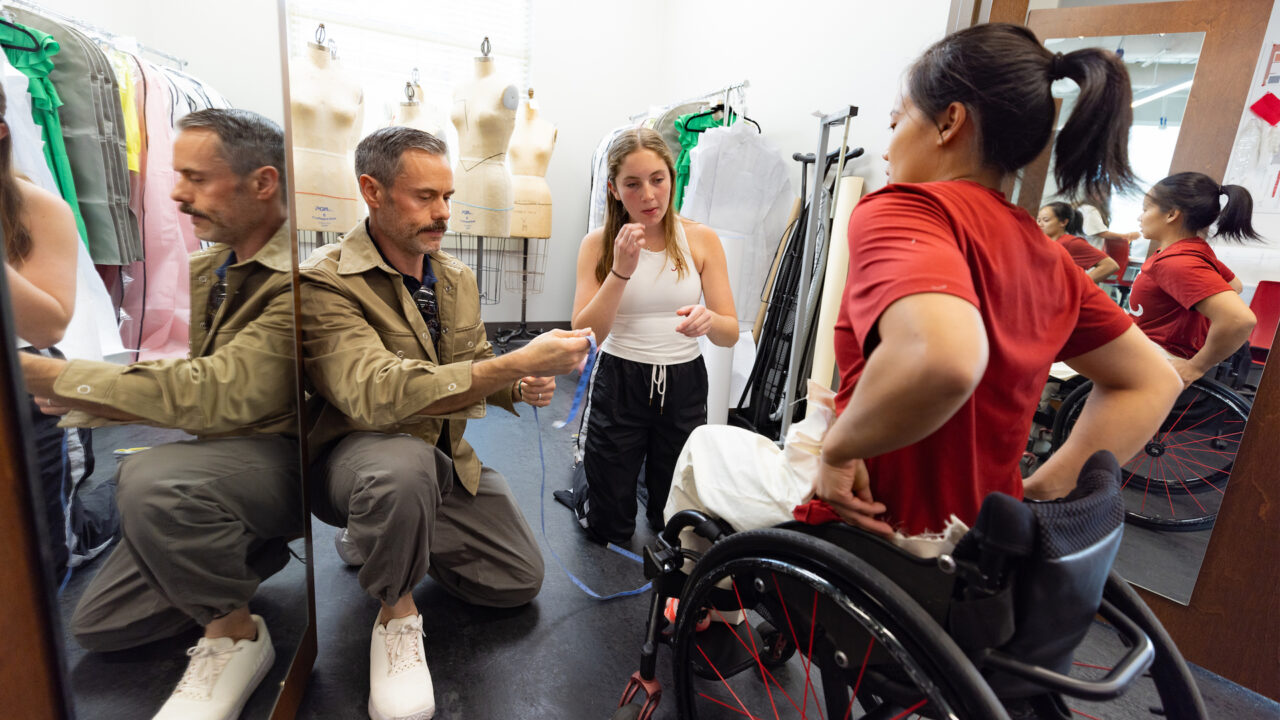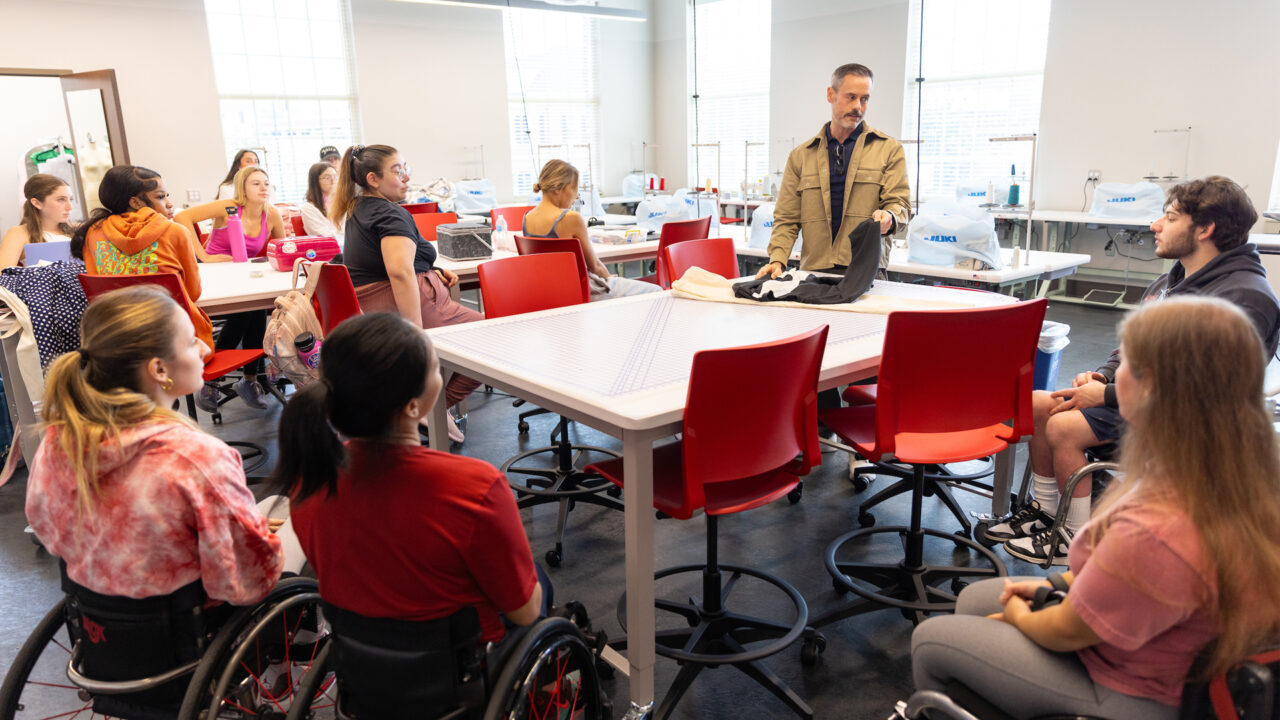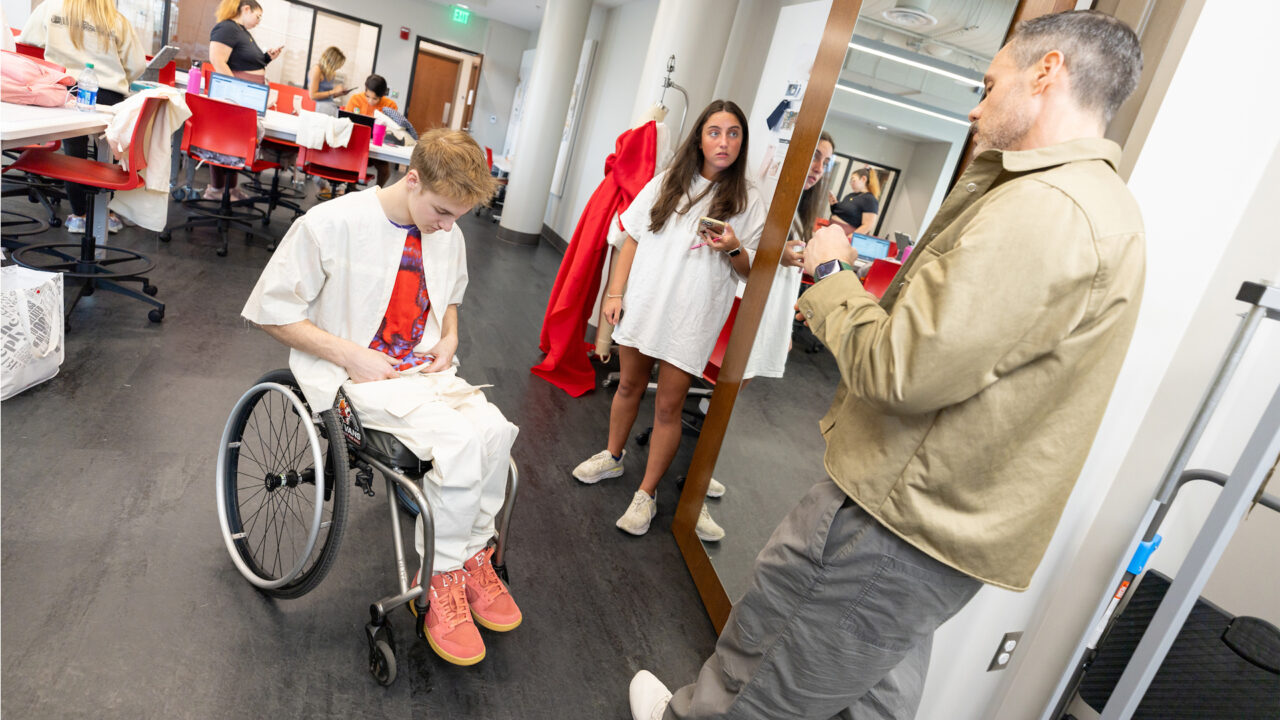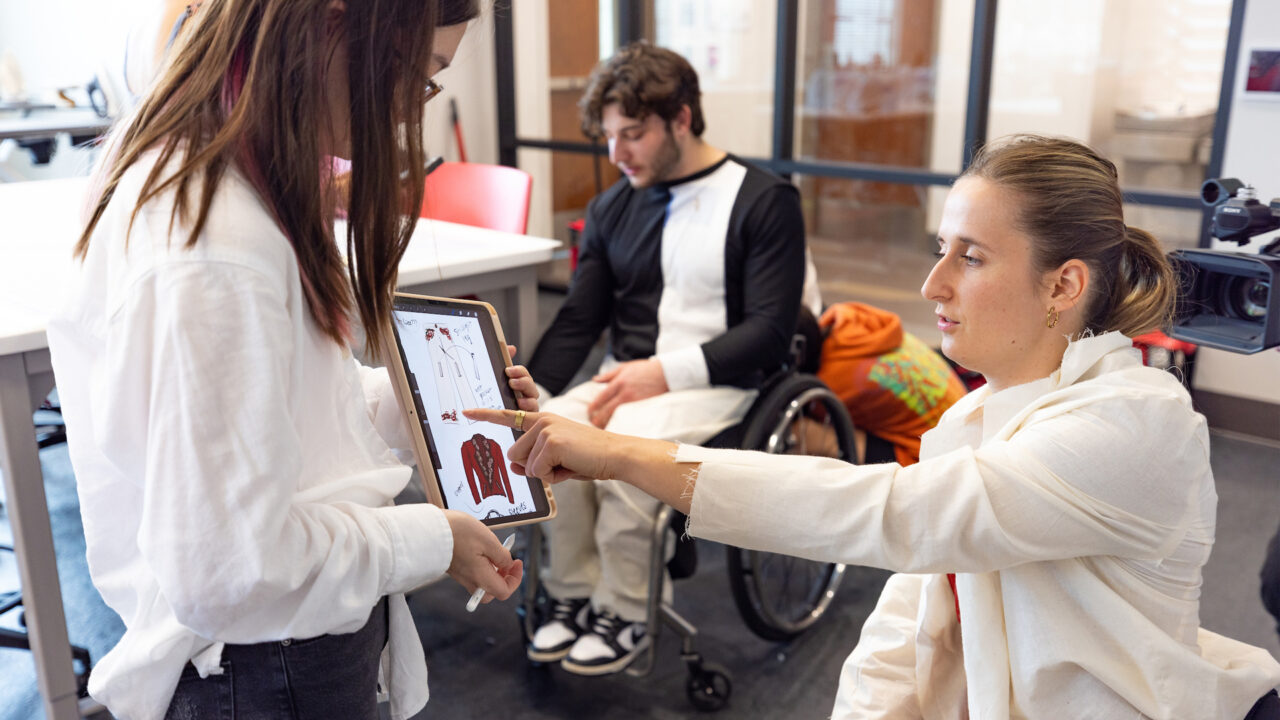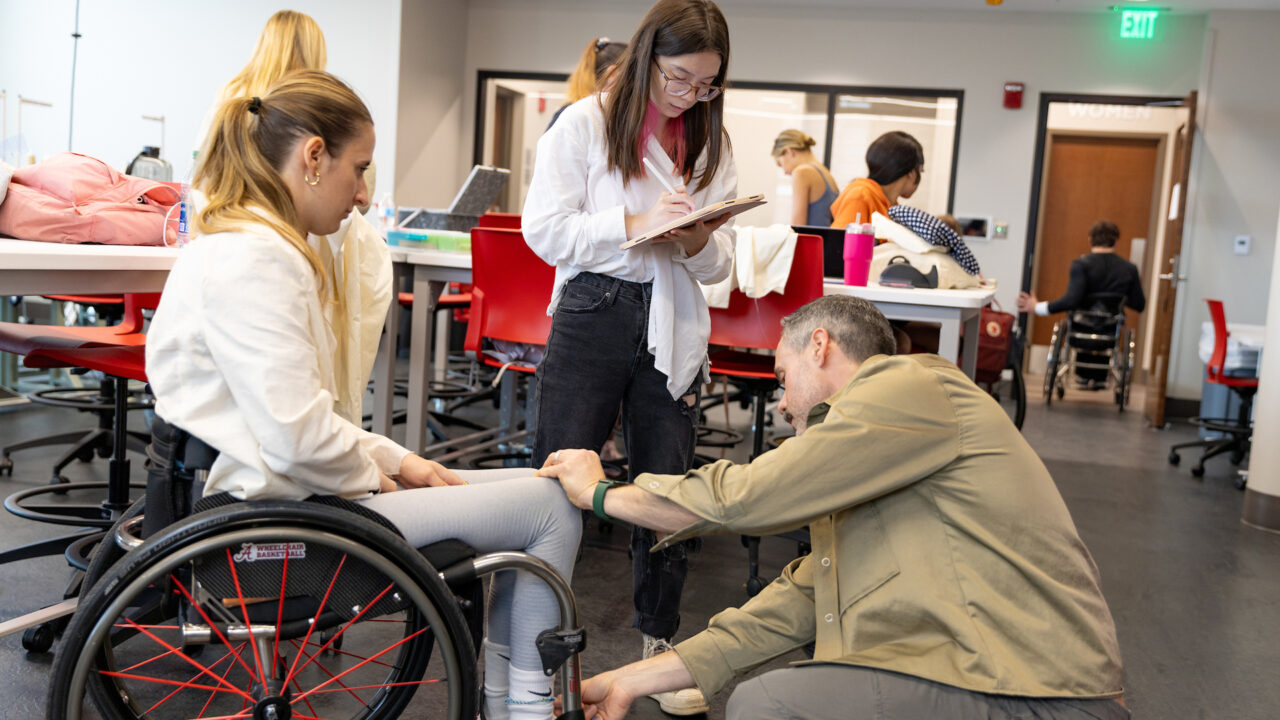Finding clothes that are the perfect fit and style can be a chore for anyone. But for those who use wheelchairs, it can be even more of a challenge because of the lack of clothing available that doesn’t confine or restrain in areas where functionality is key.
As part of a nearly $300,000 grant from the U.S. Department of Agriculture National Institute of Food and Agriculture, apparel design students in the department of clothing, textiles and interior design created custom apparel for several UA adaptive student-athletes to foster awareness of the importance of adaptive apparel merchandising and design.
“Apparel design students interviewed their adaptive student-athlete clients to gain insights on their needs, desires and pain points,” said Brian Taylor, co-project director for this grant project who led the class that designed the adaptive apparel. “The design students took this information to begin their design process by researching inspiration, current adaptive apparel offerings in the market, design features in adaptive apparel, sourcing materials and trims, and ideating solutions.”
Each design included features to aid the individual, such as adjusted hem lengths, adjustable neck lines and shoulder areas, closures like magnets or Velcro, and pockets in better locations on the garment for individuals in wheelchairs to ensure excess fabric would not get caught in the wheel of their chairs.
“The process was extremely straightforward and easy,” said Preston Howell, an adaptive student-athlete who took part in the project. “I was asked about clothing preferences and brand preferences to give them ideas about what clothes would suite me.”
The three-year collaborative project with the University of North Carolina at Greensboro allows the department to incorporate projects into apparel design and fashion merchandising courses and develop an undergraduate certificate in adaptive apparel. It also provides students with the fabric and trims used, and the adaptive student-athletes were able to keep all pieces created by the apparel design students.
“My immediate reaction to seeing my clothes was, ‘Woah this is… different,’” said Howell. “Once I tried it on it surpassed all my previous thoughts. The outfit looked really good and it felt comfortable and fit me very well.”
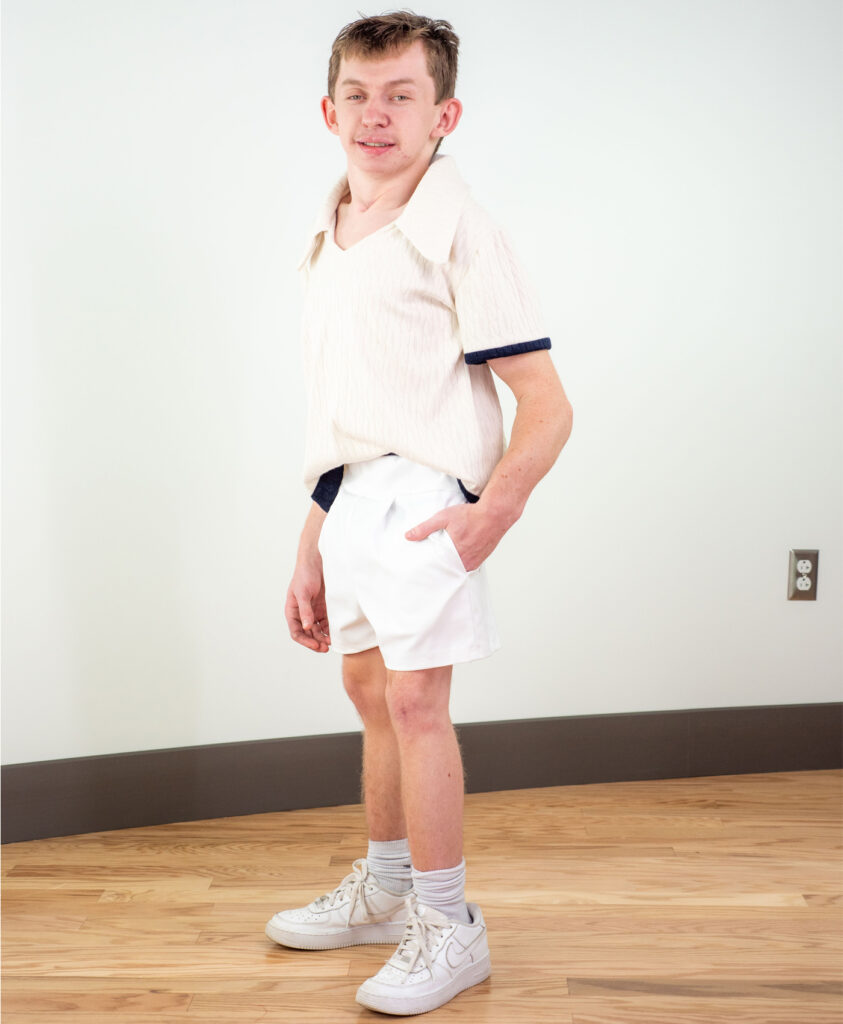
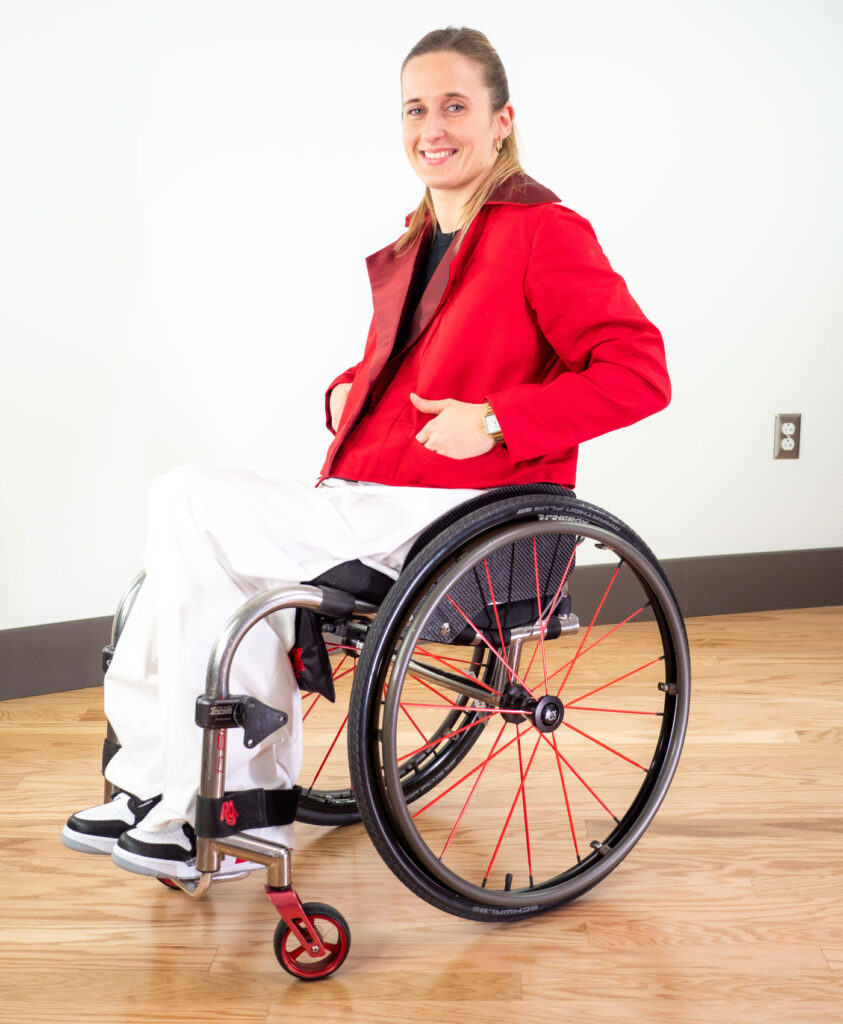
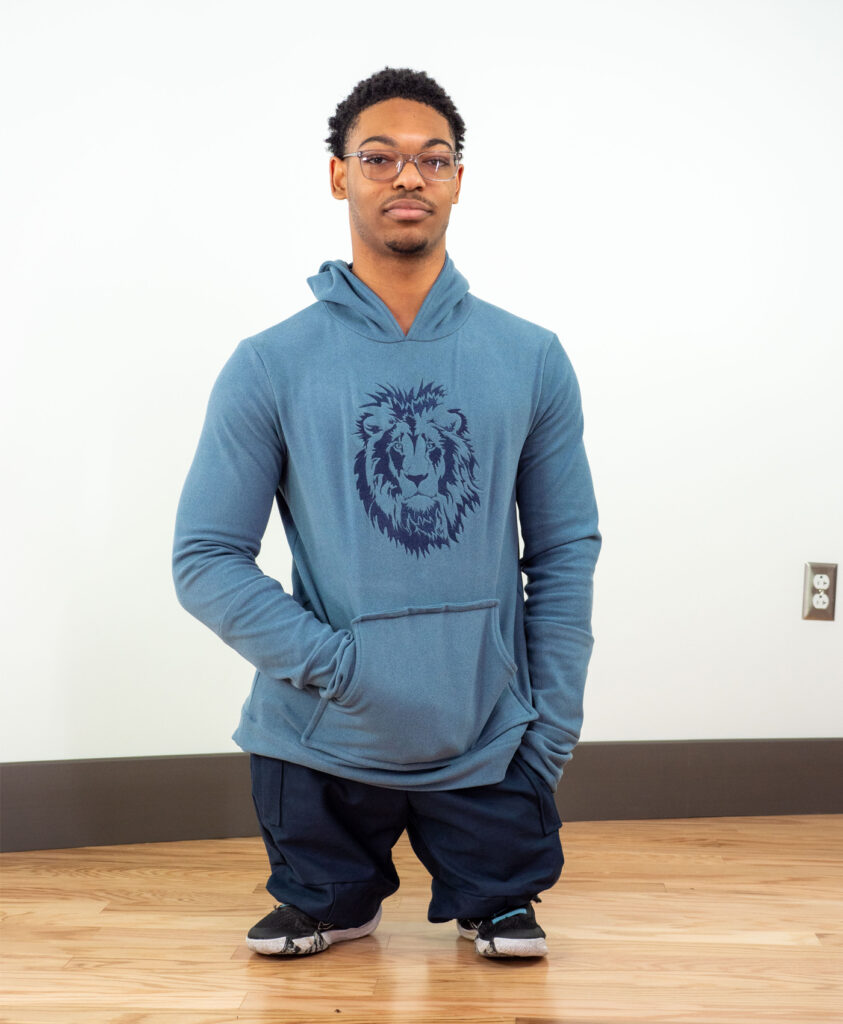

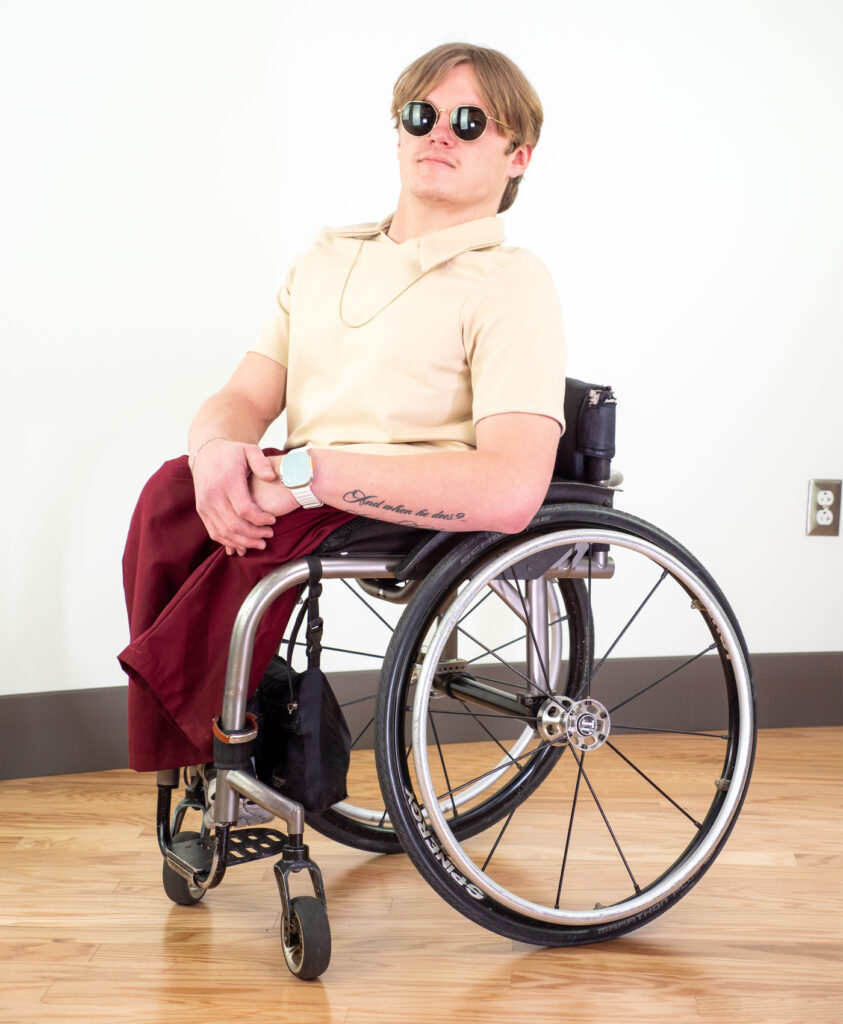
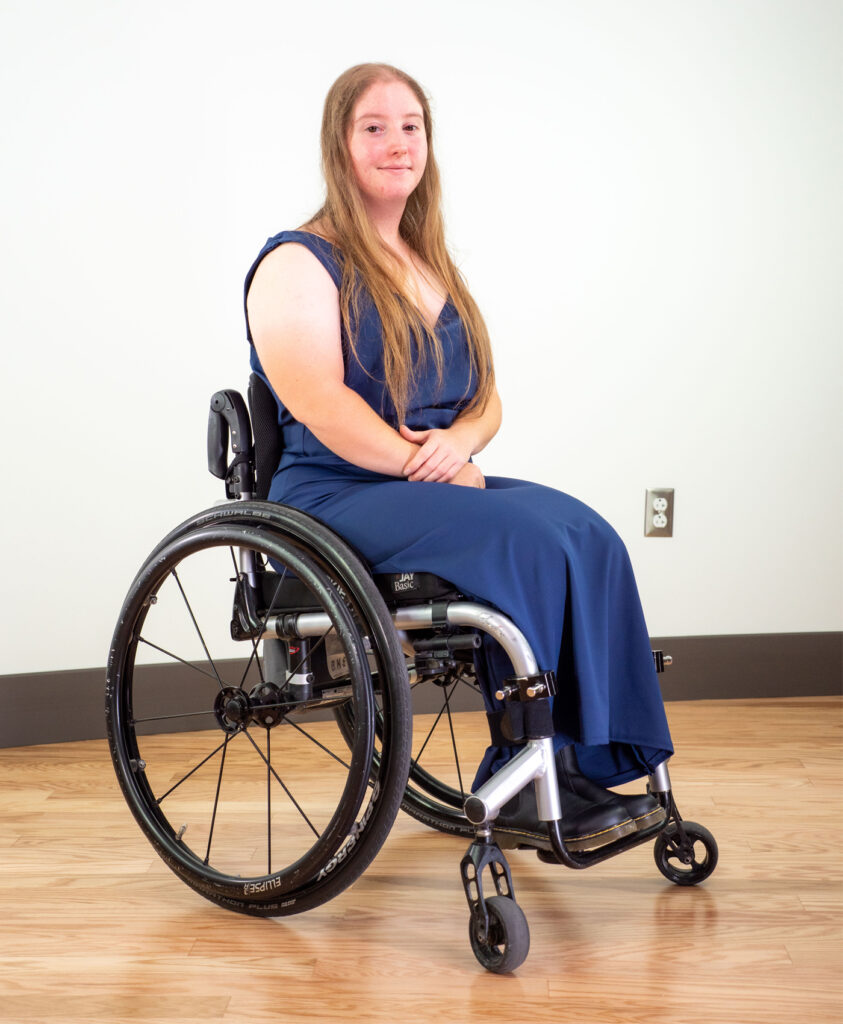
“The adaptive student-athletes were ecstatic and thoroughly pleased with the custom apparel,” said Taylor. “They appreciated the color and high-quality fabric choices as well as the specialized details our students incorporated into each piece. During the final shoot you could tell how proud they were to show off their looks and were bragging about their outfits. It was a great moment to witness.”
This semester, Dr. Xiao Tong, the grant project director, will incorporate a social media project into her fashion marketing class to promote acceptance of adaptive apparel and raise awareness about the clothing needs of people with disabilities.
